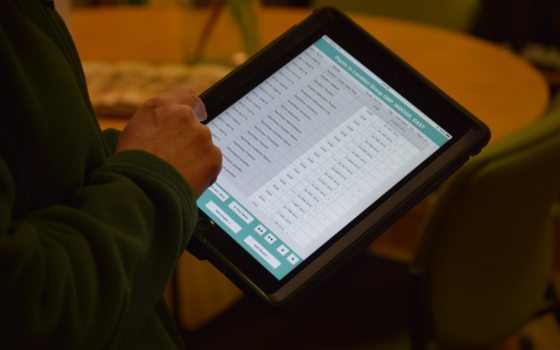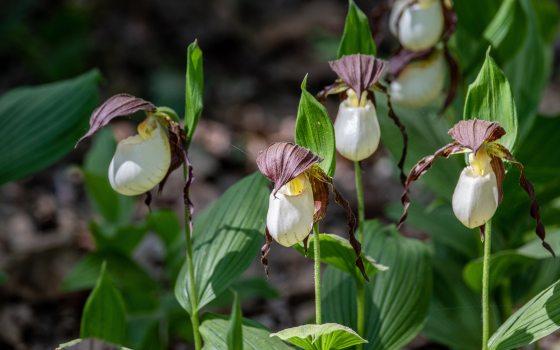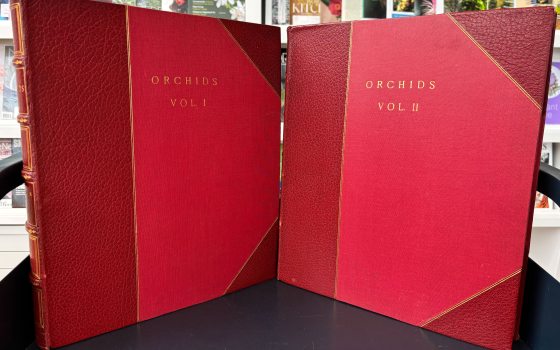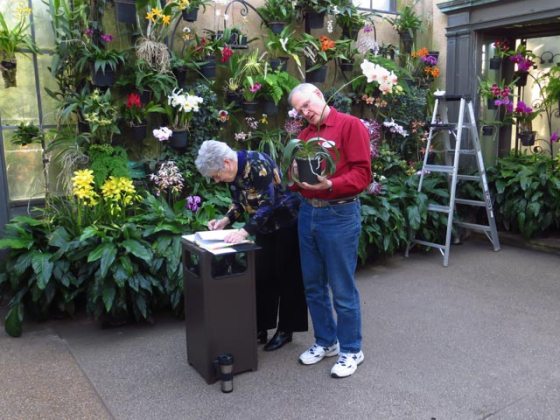
Volunteers Jean Godorecci and Paul Lysko in the Orchid House recording blooms. Photo by Kirsty Wilson.
Springtime at Longwood Gardens is highly anticipated by both gardener and guest. It’s the time of year when it seems like everything is coming into bloom, sometimes all at once! When our flowers bloom it is a time of joy and hard work rewarded. The annual bloom cycle affects the balance of nature and even our cultural and agricultural practices. Typically the timing of flowering is determined by environmental cues such as temperature, light, and rainfall.
Phenology is the scientific study of nature’s seasonal events—when cherry trees bloom and when birds choose to nest, for example. Studying phenology is a great way of getting outside and observing nature. Longwood Gardens has been observing and collecting the phenological data of when plants boom in our Gardens for many years. The data collected helps predict when plants will bloom each year, when to collect pollen for breeding programs, when to photograph flowers, or to let guests know the best time to visit to see a specific bloom.
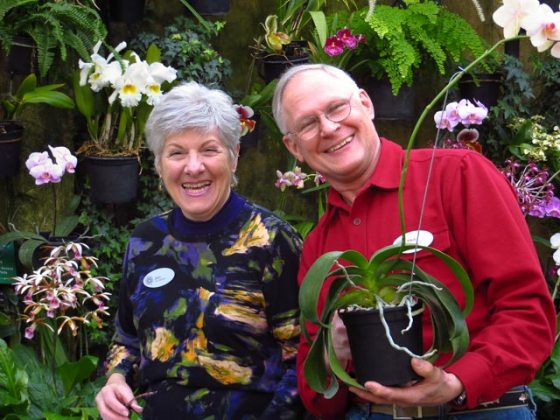
Jean Godorecci and Paul Lysko, members of the Phenology team. Photo by Kirsty Wilson.
We are lucky to have a team of 15 trained observers who are dedicated to this important task. This all-volunteer team observes flowering blooms in the Orchid House, outdoor areas of the Gardens and in the “behind-the-scenes” nursery and research areas on the property. They record bloom times from March till the first frost in the fall, recording the date when a plant has flower buds, open flowers (fresh pollen), old flowers, immature fruit, and mature fruit.
In the Conservatory, the orchid team records blooms throughout the whole year as they are grown indoors under glass. Each member of the team is assigned a specific area to observe and record. The observers receive training in plant identification but many already have a background or keen interest in science. This is one of our dedicated volunteer teams whose work isn’t necessarily noticed by guests, and yet their work is a vital component of Longwood’s vision.

Volunteer Duane Erdmann in the Orchid House. Photo by Kirsty Wilson.
This project originally consisted of just one volunteer who meticulously toured the perennial garden each week, documenting the plants that were in bloom. This was important data to record and for years the handwritten notes helped document the plants that were flowering throughout the Gardens. These records served as the basis for a book called When Perennials Bloom: An Almanac for Planning and Planting, written by the previous plant curator, Tomasz Anisko.
Fast-forward to the present day and our phenology project looks a lot different. Now our larger army of volunteers scouts different areas of the property using iPads with an app software called Garden Notepad Plus. The app allows the user to search our plant inventory and check off which plant is in bloom. The records are then directly uploaded to our plant records database system and transferred to Plant Explorer, our online plant database, where they can be easily accessed and searched.
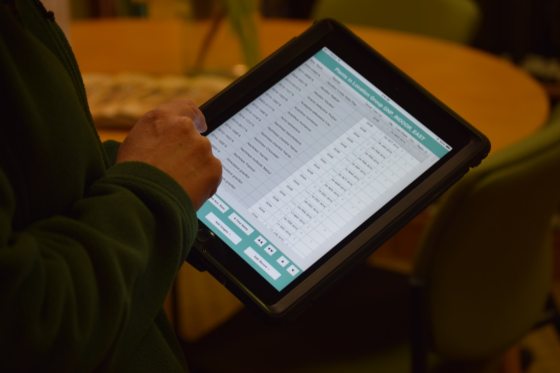
Garden Notepad Plus app on iPad. Photo by Kirsty Wilson.
This important tool developed by Longwood helps homeowners choreograph the aesthetic display of their own gardens. They can use the website to search for plants using common or scientific names and get information on when certain plants bloom throughout the year. They can even build their own garden tour of Longwood based upon their own particular interest in certain plants, trees, or shrubs.
Phenological records were first recorded in Sweden during the 18th century. Certain groups were then organized in other European countries and in North America in the 19th and early 20th centuries. In recent years there has been a resurgence of interest in phenological records due to the growing awareness of climate change. Typically plants spend their entire life in one location; hence their development and survival is dependent on changes in the regional weather and soil conditions.
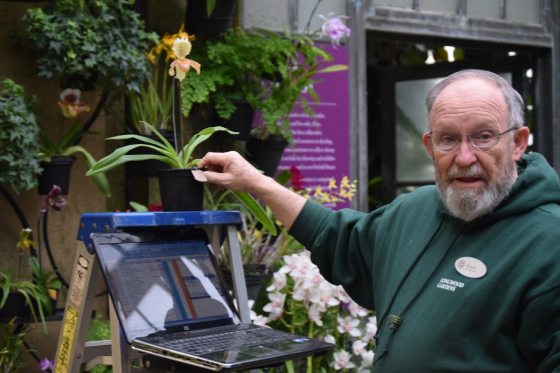
Volunteer Duane Erdmann in the Orchid House. Photo by Kirsty Wilson.
On a broader global scale, the phenology project at Longwood provides us with valuable scientific data. This data could be used by us internally or by others externally to quantify climate change or other scientific research by tracking the bloom times of plants. This data helps determine if there is a significant shift in blooming over a period of time. Across the world, many spring events are occurring earlier than before and fall is happening later than it did in the past. This valuable work can help us determine how our plants are responding to climate change and will help us predict future behavior trends at Longwood.
Learn More
USA National Phenology Network
Nature’s Notebook
If you are a keen professional or amateur naturalist you can help observe plants and animals at home under a national initiative. Nature’s Notebook is a national online program which encourages people to record plant and animal data in their own landscape, which, in the long term, could be used to generate scientific discovery and research.
